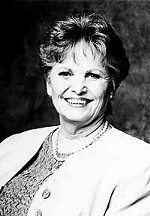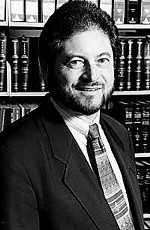Naked City
The city's SMARTHousing initiative gets its first concrete proposal for affordable housing, a 55-unit complex for lower-income seniors.
By Kevin Fullerton, Fri., Oct. 13, 2000
A SMART Start
Shiny new apartment complexes aren't exactly a common sight in East Austin, where the grass just never seems to look as green to developers as it does almost everywhere else. But a gift of free land from the city may finally turn things around for the Eastside, where for decades, even publicly funded proposals have been dragged down or killed off by neighborhood politics, investors' insecurity, or outright chicanery.
On Monday, city housing officials celebrated what looks to be a firm commitment from the nonprofit group Volunteers of America to build a 55-unit complex for low-income seniors on vacant city land abutting the Oak Springs library. Naturally, the city functionaries had to relinquish the spotlight to Austin's U.S. rep., Lloyd Doggett, who helped secure a federal grant for the project and sponsored the press conference. But the deal, a public/private partnership shepherded by the Austin Housing Finance Corporation and Council Member Daryl Slusher, represents a breakthrough for the city's SMART Housing program. Under that program, the city waives development fees on projects that provide homes or apartments affordable to lower-income residents, and, particularly relevant in this case, authorizes the city housing office to dedicate surplus city land to housing projects.
The prospect that this seniors complex will be built on city-owned land raises the question of how many more pieces of unused city land are out there that could be prime sites for affordable housing. In June, City Manager Jesus Garza ordered all city departments to re-check their lists of underutilized property to make sure it was all reported on the city's central database.
And have scores of potential sites popped up as a result of the survey? About 1,600 parcels of land are now listed, reports city Real Estate Division agent Charles Ardoin, but nearly all are remnants of easements or in the floodplain. "Looking at the number, you'd think we own half of Travis County," says Ardoin, "but when you look at them size-wise, there just isn't anything there."
"There's not as much as you'd hope for," city housing director Paul Hilgers agrees. It appears that the city does a pretty thorough job of keeping its usable land in play. And what few large, empty tracts exist typically aren't appropriate for housing, says Melinda Ruby, AHFC's chief land scout. "When you get out on it, it's [usually] a ditch," she says.
That's not to say that no tantalizing tracts have popped up, however. One 10-acre site behind a city service center off Ed Bluestein Boulevard, currently used to store sewer pipe and gravel, commands a spectacular view of the downtown skyline. Three large lots on Clawson offer a Bouldin neighborhood address. But the Ed Bluestein site is mostly rough hillside that plunges into the floodplain, and the Clawson lots are too valuable to place entry-level homes on without creating problems with the appraisal district, according to Ruby. Roomy as they are, Ruby says, the lots can't be subdivided because they also stick out into the floodplain.
But other, humbler pieces of land are getting a close look from the housing office. The city's Parks and Recreation Dept. has brought forward a flat, 3.5-acre field near the Dottie Jordan Recreation Center on Manor. And land-rich Austin Energy, whose donation of a four-acre site near Montopolis two years ago helped start the drive to dedicate city land for housing, has stepped forward with two additional parcels: three acres near Burleson and Oltorf, and a site on Convict Hill near Dick Nichols Park. The catch is that both tracts are located under power lines, though real estate services manager Judy Fowler says there's enough room to build residences at a safe distance.
Though the land choices aren't plentiful now, Hilgers says, more options may become available as the city improves its drainage systems over the next couple of years, raising more tracts out of flood zones. For now, Hilgers adds, it's encouraging that city departments are at least thinking about whether they can contribute to the housing stock. "All departments have recognized that affordable housing is a major priority for the council and city manager, and they're responding accordingly."
Of course, the biggest public landholder in Austin isn't the city, it's the state of Texas. Any chance the state would be willing to make available any of the 1,165 acres of underutilized land it owns in and around Austin? The General Land Office says all potentially usable tracts are already accessible to the Texas Dept. of Housing and Community Affairs.
Richard Halpin, director of America Youth Works (formerly the American Institute for Learning), who for years has been building low-cost homes on city-owned lots, says the city would be wise to encourage development even on diamonds in the rough like the tract near Ed Bluestein. There are developers out there who will invest the "sweat equity" to make housing affordable, says Halpin, if the city will offer incentives like free land in return. The SMART Housing program, housing trust fund, and new emphasis on bond financing show that city leaders are at last turning their attention to the housing problem, says Halpin. And he adds that, as partnerships with nonprofits succeed, he hopes major employers will jump in with financial aid and complete the picture.
Got something to say on the subject? Send a letter to the editor.








